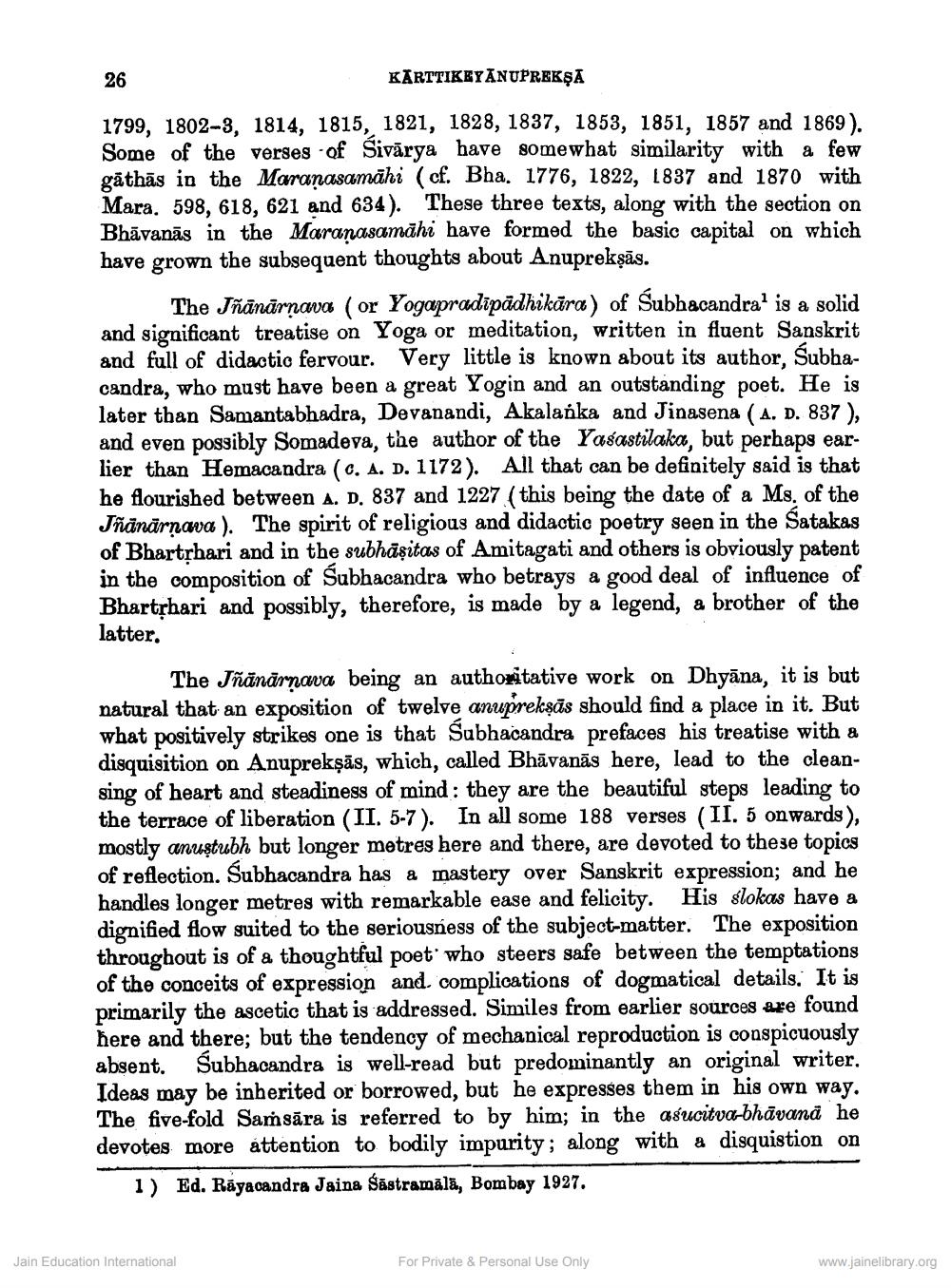________________
26
KĀRTTIKEYANUPREKŞA
1799, 1802-3. 1814, 1815, 1821, 1828, 1837, 1853, 1851, 1857 and 1869). Some of the verses of Sivārya have somewhat similarity with a few gāthās in the Maranasamāhi (cf. Bha. 1776, 1822, 1837 and 1870 with Mara. 598. 618, 621 and 634). These three texts, along with the section on Bhāvanās in the Maranasamāhi have formed the basic capital on which have grown the subsequent thoughts about Anuprekşās.
The Jñānārnava (or Yogapradīpādhikāra) of Subhacandrais a solid and significant treatise on Yoga or meditation, written in fluent Sanskrit and full of didactio fervour. Very little is known about its author. Subhacandra, who must have been a great Yogin and an outstanding poet. He is later than Samantabhadra, Devanandi, Akalanka and Jinasena ( A. D. 837 ), and even possibly Somadeva, the author of the Yasastilaka, but perhaps ear. lier than Hemacandra (C. A. D. 1172). All that can be definitely said is that he flourished between A. D. 837 and 1227 ( this being the date of a Ms. of the Jñānārnava). The spirit of religious and didactic poetry seen in the Satakas of Bhartrhari and in the subhāşitas of Amitagati and others is obviously patent in the composition of Subhacandra who betrays a good deal of influence of Bhartphari and possibly, therefore, is made by a legend, a brother of the latter.
The Jñānārnava being an authoritative work on Dhyāna, it is but natural that an exposition of twelve anuprekşās should find a place in it. But what positively strikes one is that Sabhacandra prefaces his treatise with a disquisition on Anuprekşās, which, called Bhāvanās here, lead to the cleansing of heart and steadiness of mind: they are the beautiful steps leading to the terrace of liberation (II. 5-7). In all some 188 verses (II. 5 onwards), mostly anuştubh but longer metres here and there, are devoted to these topics of reflection. Subhacandra has & mastery over Sanskrit expression; and he handles longer metres with remarkable ease and felicity. His slokas have a dignified flow suited to the seriousness of the subject-matter. The exposition throughout is of a thoughtful poet who steers safe between the temptations of the conceits of expression and complications of dogmatical details. It is primarily the ascetic that is addressed. Similes from earlier sources axe found Here and there; but the tendency of mechanical reproduction is conspicuously absent. Subhacandra is well-read but predominantly an original writer, Ideas may be inherited or borrowed, but he expresses them in his own way. The five-fold Samsāra is referred to by him; in the asucitva-bhāvanå he devotes more attention to bodily impurity; along with a disquistion on
1) Ed. Rāyacandra Jaina Šāstramala, Bombay 1927.
Jain Education International
For Private & Personal Use Only
www.jainelibrary.org




